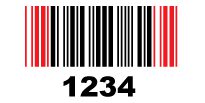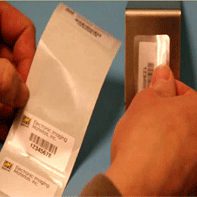No matter what you call it – Code 39, Code 3 of 9, USS Code 39, USD-3, Alpha39, or Type 39, this barcode has remained one of the most popular codes in use today – except for the UPC code used on all retail merchandise. Code 39 was the first alphanumeric code to be developed back in 1974 and is still one of the most commonly used symbologies for electronics, healthcare, and government. It is a discrete, self-checking, variable-length code:
- In a discrete code, each character can stand alone and be decoded independently of other characters. Each character is separated from its neighbors by inter-character gaps that contain no information.
- Self-checking means that a single printing defect will not cause a character to be transported to another valid character in the same symbology.
- A variable length code has no limit to the number of characters that can be encoded. The limits are set solely by the size of the label.
The key drawback to using Code 39 is that it is a low-density code that takes more space than compact codes such as Code 128 and thus may not be appropriate for small labels.  Every Code 39 character consists of 5 bars and 4 spaces with 3 of them wide (for a binary value of 1) and 6 narrow (for a binary value of 0) for a total of nine elements. It encodes 43 different upper case alphabetic, numeric, and graphic characters plus a space and has the capability to encode all 128 ASCII characters. The Code 39 barcode should always be preceded and followed by a quiet zone that should be at least 10 narrow bars (NB) – (aka 10 times the NB). Code 39 does not require a checksum or check digit, although a Modulo (Mod) 43 check digit can be added for increased data integrity.
Every Code 39 character consists of 5 bars and 4 spaces with 3 of them wide (for a binary value of 1) and 6 narrow (for a binary value of 0) for a total of nine elements. It encodes 43 different upper case alphabetic, numeric, and graphic characters plus a space and has the capability to encode all 128 ASCII characters. The Code 39 barcode should always be preceded and followed by a quiet zone that should be at least 10 narrow bars (NB) – (aka 10 times the NB). Code 39 does not require a checksum or check digit, although a Modulo (Mod) 43 check digit can be added for increased data integrity.
So how do you know it’s Code 39? Look at the bar patterns that represent the start and stop character patterns and which are meant to tell a scanner when the code begins and ends. The first five bars of the code will match the last five bars of the code (aka start and stop characters)… Narrow bar, wide space, narrow bar, narrow space, wide bar, narrow space, wide bar, narrow space, narrow bar. Remember the 5 bars/4 space rule? (For those regularly checking – a quick look at the of the end of code shows a narrow bar, wide bar, wide bar, narrow bar pattern.) Need help figuring out barcode labels? Reach out to The Label Experts and we’ll be happy to point you in the right direction!





